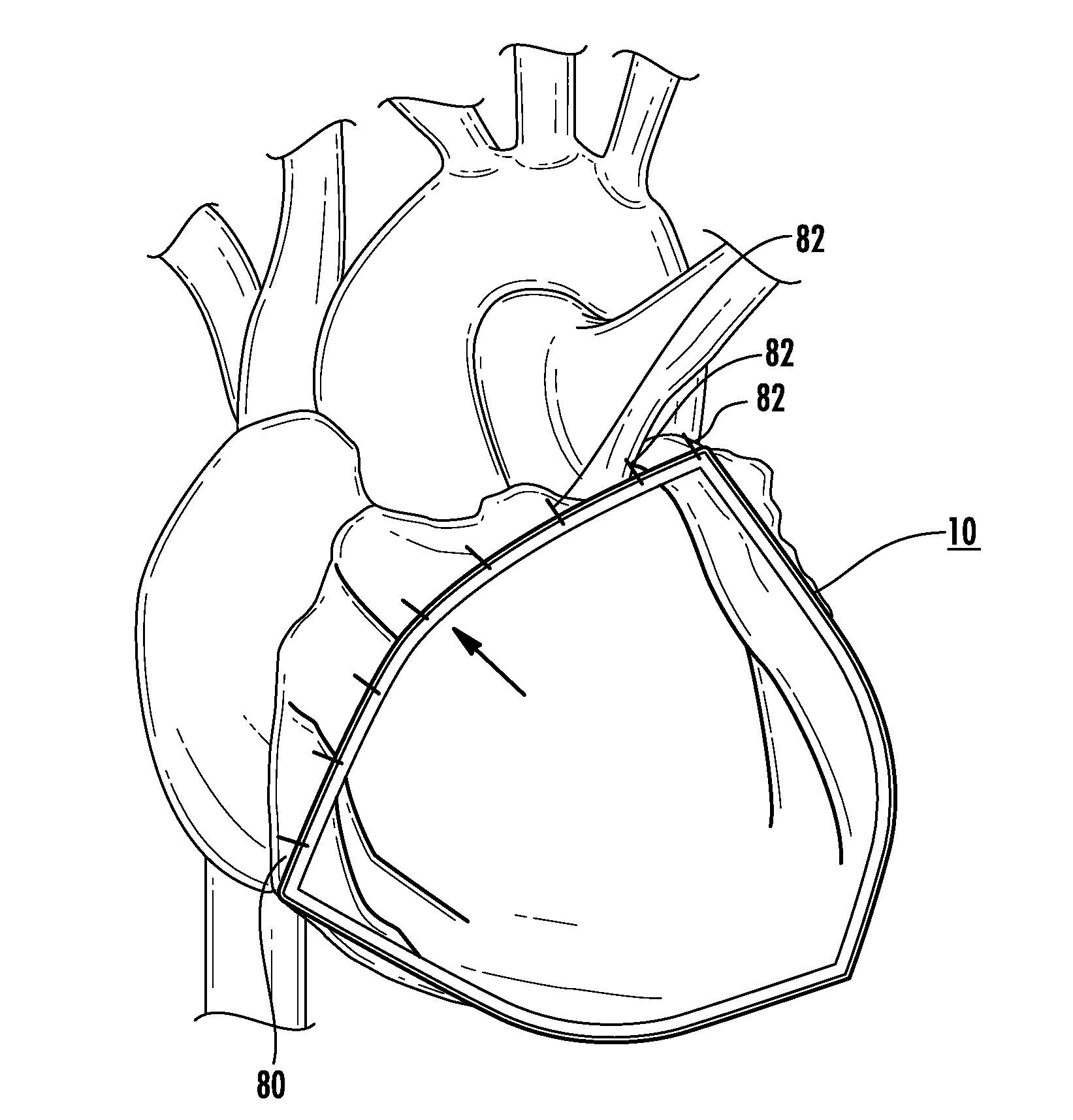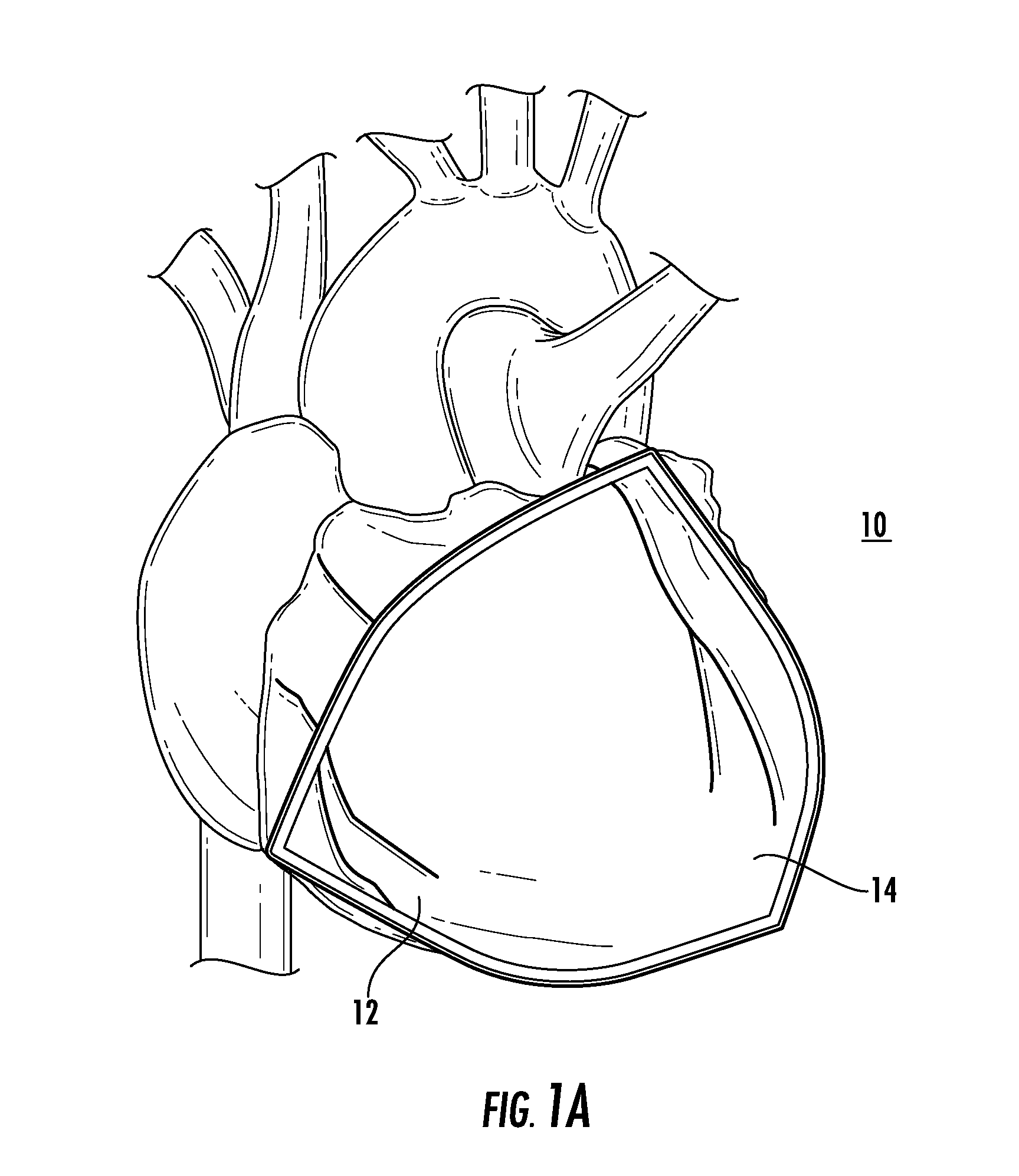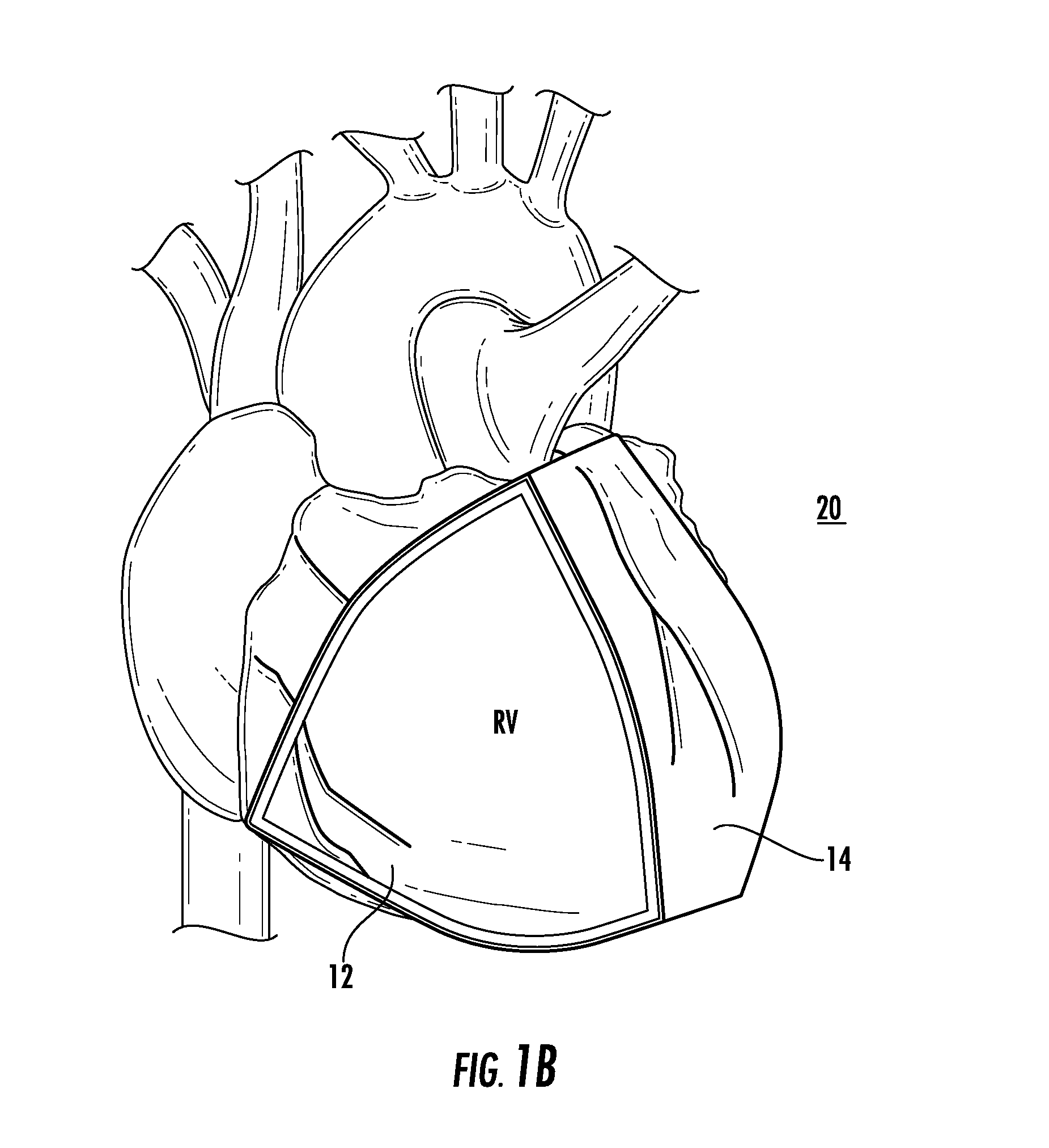Bioactive implant for myocardial regeneration and ventricular chamber restoration
a bioactive implant and myocardial technology, applied in the direction of prosthesis, skeletal/connective tissue cells, ligaments, etc., can solve the problems of limited cell transplantation, limited cell transplantation for cardiac support and regeneration, and major public health problems such as heart failure, to achieve the effect of reducing scar fibrosis, reducing scar fibrosis, and enhancing myocardial viability
- Summary
- Abstract
- Description
- Claims
- Application Information
AI Technical Summary
Benefits of technology
Problems solved by technology
Method used
Image
Examples
example 1
Biological Evaluation of Elastomeric Scaffold Membranes
Quantification of Cell Proliferation.
[0140]MTT Assay
[0141]The MTT system is a simple, accurate, reproducible means of measuring the activity of living cells via mitochondrial dehydrogenase activity. The key component is 3-[4,5-dimethylthiazol-2-yl]-2,5-diphenyl tetrazolium bromide or MTT. Solutions of MTT solubilised in tissue culture media or balanced salt solutions, without phenol red, are yellowish in color. Mitochondrial dehydrogenases of viable cells cleave the tetrazolium ring, yielding purple MTT formazan crystals which are insoluble in aqueous solutions. The crystals can be dissolved in acidified isopropanol. The resulting purple solution is spectrophotometrically measured. An increase in cell number results in an increase in the amount of MTT formazan formed and an increase in absorbance.
[0142]Material and Method
[0143]Pieces of elastomeric microporous membranes of polyethyl acrylate (PEA100 in what follows) and a copoly...
example 2
Electrophysiological Evaluation of the Elastomeric Scaffold Membranes
[0153]Measurements of Electrical Impedance
[0154]Electrical Conduction
[0155]Myocardial electrical impedance has shown to be an effective indicator of myocardial tissue characteristics and electrode tissue interface. Significant modifications have been demonstrated during tissue ischemia.
[0156]Electrical resistivity (also known as specific electrical resistance or volume resistivity) is a measure of how strongly a material opposes the flow of electric current. A low resistivity indicates a material that readily allows the movement of electrical charge. The SI unit of electrical resistivity is the ohm [Ω].
[0157]Material and Methods
[0158]Pieces of microporous membranes of polyethyl acrylate (PEA100 in what follows) and a copolymer of ethyl acrylate and hydroxyethyl acrylate with a 90:10 mass ratio of both monomers (hereafter PEA90) were employed. The membranes had been cut into pieces of dimensions 25 mm×25 mm, with an...
example 3
[0168]The failing cardiac muscle needs to be chronically supported to decrease ventricular wall stress and also to be regenerated to improve ventricular function. This Example demonstrates that the association of stem cells with a collagen matrix and a polyester mesh for cardiac wrap provides better results than the implantation of polyester mesh alone.
[0169]To illustrate this embodiment, fifteen sheep underwent 1 hour of surgical myocardial ischemia followed by reperfusion. Three groups were created: Group 1: coronary occlusion without treatment (control group). Group 2: LV constraint using a polyester mesh for cardiac wrap. Group 3: the ischemic area was treated associating stem cells, a collagen matrix and a polyester mesh. Autologous adipose tissue derived stem cells (ASC) cultured in hypoxic conditions (5%) were labelled with BrdU and injected into the infarct area and into a collagen matrix. At 3 months animals were evaluated with echocardiography and histopathological studies...
PUM
| Property | Measurement | Unit |
|---|---|---|
| diameters | aaaaa | aaaaa |
| diameters | aaaaa | aaaaa |
| porosity | aaaaa | aaaaa |
Abstract
Description
Claims
Application Information
 Login to View More
Login to View More - R&D
- Intellectual Property
- Life Sciences
- Materials
- Tech Scout
- Unparalleled Data Quality
- Higher Quality Content
- 60% Fewer Hallucinations
Browse by: Latest US Patents, China's latest patents, Technical Efficacy Thesaurus, Application Domain, Technology Topic, Popular Technical Reports.
© 2025 PatSnap. All rights reserved.Legal|Privacy policy|Modern Slavery Act Transparency Statement|Sitemap|About US| Contact US: help@patsnap.com



